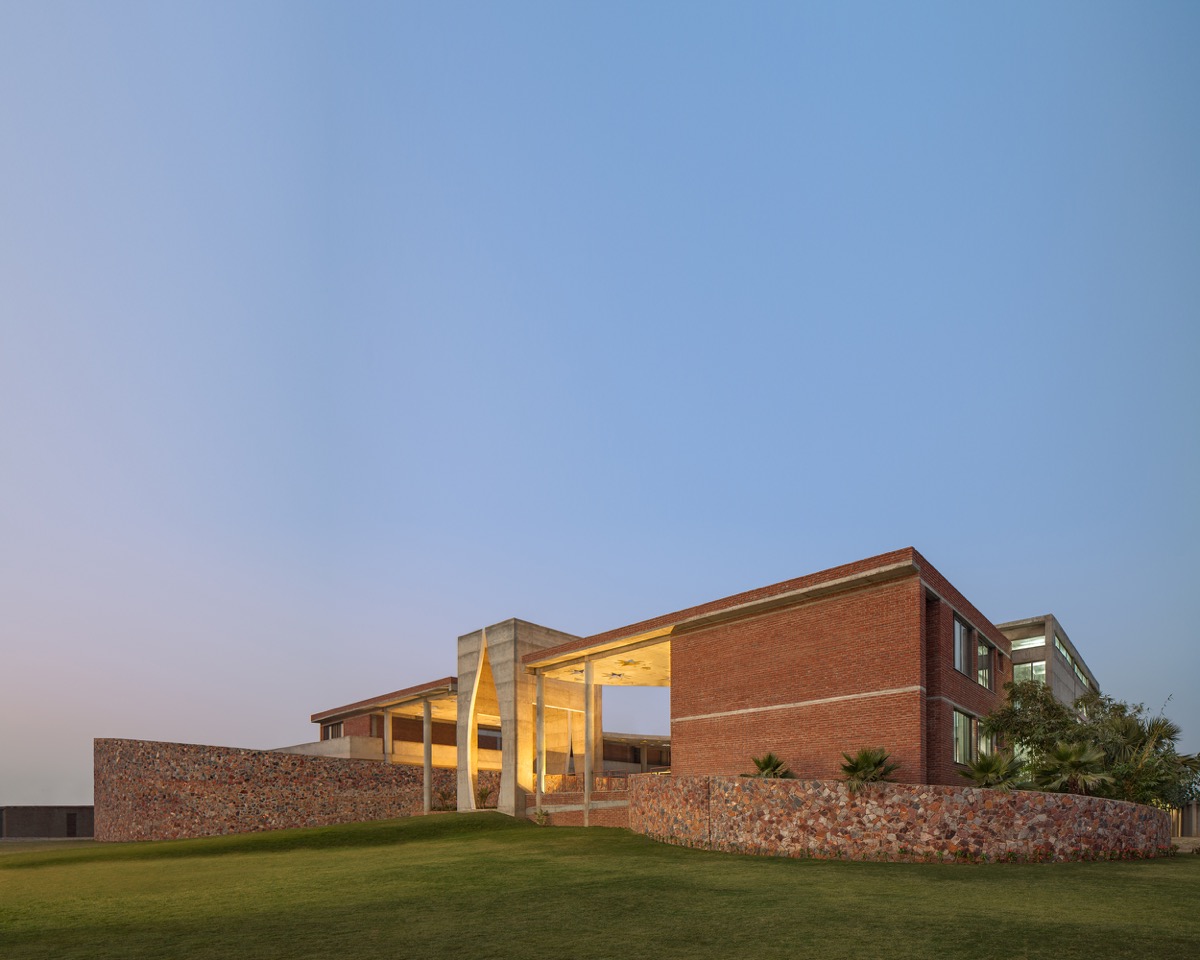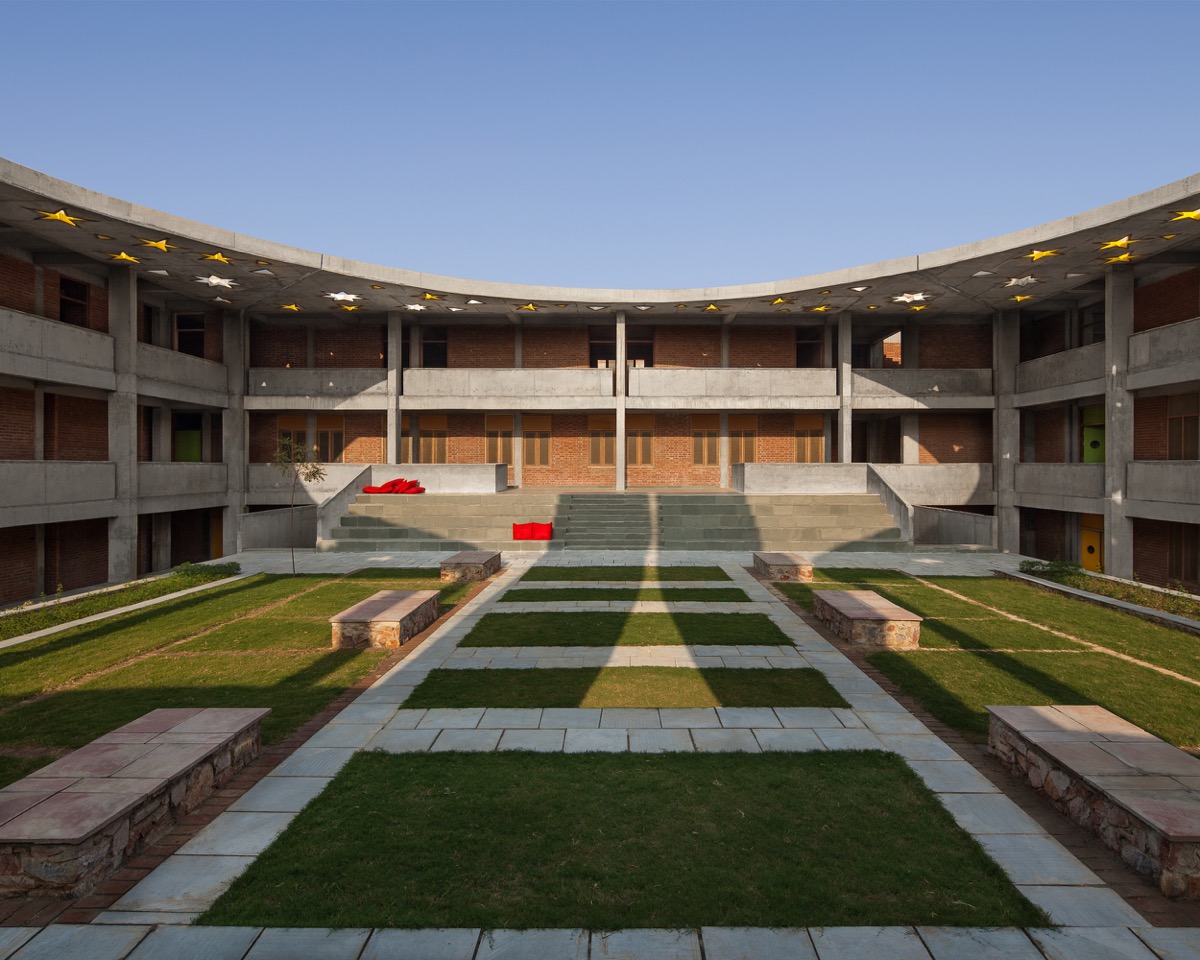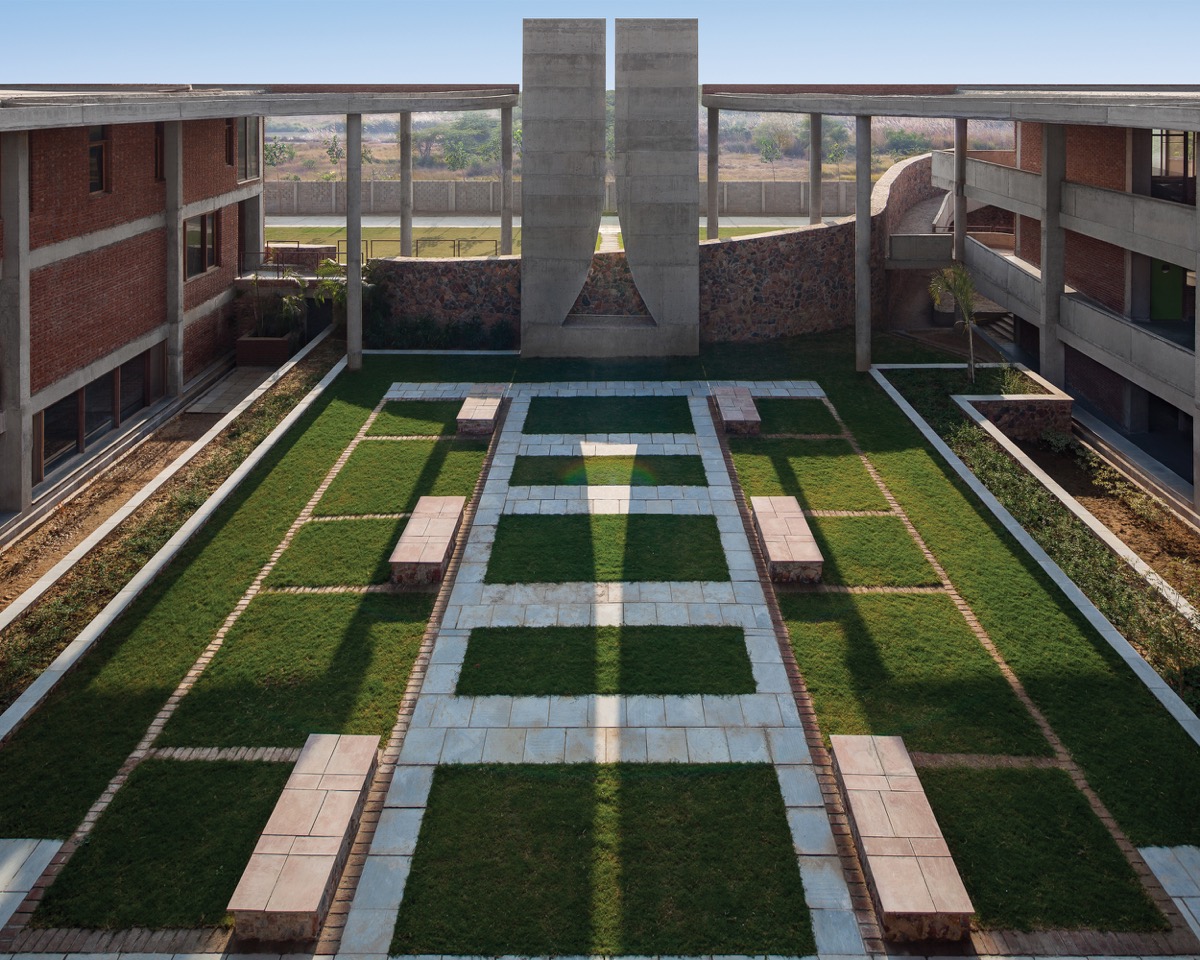
The conception of the National Institute for Faith Leadership is a journey that we went through together with the architects of the campus. As the philosophy evolved, so did the project. The client and the architects, meeting upon A chance encounter, becoming partners in the journey of the development of this ambitions and sensitive project through in- depth exploration of their design studio. The studio dug deep into its basic conception, questioning and answering its relevance and resonance with the modern times as an integrated team the transcended beyond being clients and architects. Discourse on the theme of Islam, discussions on relevance of the theme and debates on its validity and its role were all manifested in the physicality of the campus.
The Nifl is a movement; a paradigm shift from today’s perception of Islam and its propagation. There are two fundamental aims to this movement. One, to understand the real meanings and learnings of Islam by going back to its roots. One needs to understand the ‘real islam’ and not its ‘virtual perception’ that has been diluted by misinterpretations. Secondly, it is to deliver this understanding in spirit and nature that can be appreciated by all. This would bring in the right message to the appropriate audience to spare the society, especially the Islamic society of potential misguidance.

Fundamentally, one needs to reconnect to the nationalist and liberal Islamic overtures and evolve the understanding of this faith; traditional values that are relevant to contemporary times. The students at the institute are the faith leaders of the future. The institute wants them to learn the values of Islam with a fresh insight and also be able to eloquently spread this to the community in particular and the society at large.
Envisaged as a tool to liberalize and modernize Islam to make it relevant to today’s times and people, NIFL needed to appeal to the Muslims who wanted to embrace Islam and to the society who wanted to respect Muslims as progressive citizens and Islam as a school of thought. This meant, a campus that expressed itself as an international institution to the outer world and an inspiration the internal community.
The design process was a series of meetings, discussions and debates with the design team. The intent was to respond to the ideologies at the metaphysical level and the context and climate at the physical one. The use of raw materials of brick, concrete and stone brought in an alignment with the purity of the institute as a thought. The play of light brought in the excitement of enlightenment. The overall form of the project brought in a sense of traditions responding to today.

Together, the team went beyond being clients and designers, theory and practice, academicians and designers but worked together as a thinking team, would be able to capture the spirit of the project, its FIKR.
The Opening of the mind is a fundamental obligation of the institute. One can only inspire a mind after equipping it with the relevant tools and techniques. Therefore, the spaces were designed for two levels. An introverted individual deep-thinking and the extroverted collective discussions. Spaces needed light and volume. Spaces needed drama in light and volume. A sense of discomfort and disorientation. A sense of awe. Spaces needed to be raw.
Devoid of design as decoration, the spaces needed to evoke bare thought. Bold architectural impressions intended to push people towards brave expressions. Play of light in space and in time both brought in the required ethic and aesthetic to the institution.

The breaking of the arch is synonymous with the opening of the mind from myths and traditions. The iconic entrance is celebrating just that; an arch in concrete removes the ‘key stone’ to liberate the form, allowing in light and space.
The basic form of this object on site is mass with a hole. A courtyard that allows light in to the building as it celebrates the introverted magnificence of an Islamic institution. The arch anchors the courtyard controlling the free flowing stone wall as the landscape respects the traditional geometry. The courtyard is positioned at mid-level to two floors of the institute so as to maximize access to nature, to light and green.
The strong ascending stone wall wraps around the rigid form to bring in a certain dynamism to the external face. It encompasses a palm courtyard to protect and limit views of the reception space. It closes the center court and terminates into a winding courtyard of its own that facilitates a ramp that wraps across all floors to make the campus disabled friendly. This natural stonewall is another element that celebrates the traditional material in contemporary light.

The basic mass of brick is a simple set of classrooms, language laboratories and faculty spaces that are multi-functional. They open up to the courtyard with a wide verandah that works as a meeting and a sitting space. These spaces are as much a classroom as the traditional ones- One by discourse and the other by debate. The entrance area is the reception, a floor of office below and the residence of the vice chancellor above. All spaces take in light through various light wells that allow a clean closed external mass, an expression of Islamic values.
Two concrete volumes interface with the brick mass. They extrude and extend themselves out of the brick line to facilitate a slit of light and express as a mass that is further exaggerated by a large circular window. The two externally similar formal interventions are different in their internal function and thus accordingly adapt themselves spatially.
The library is a double height space with a large circle of light. The bare stone floors, wood structures and concrete walls, the double height stacks of books, the desktop multimedia library and the relaxed seating; all reflect a reflective learning space.

The multipurpose hall on other side is a prayer hall, a collective gathering space and a place for large lectures. This volume is again bathed with light through a circle and a slit. The floor below is a cool large dining hall that is punctuated by a semi-circular opening as a play of offset concrete walls to block views but allow light, a crescent light, again a reference to a dialogue between traditional and modern.
The entire mass is covered with a concrete cantilevered plane; an expression in plan of the breaking of the shell (the mind), as this overhanging protective shade of concrete shields and veils the campus, but opens up to the open arch. This floating floor on top is punctuated with star triangles with white and yellow renderings (a representation of geometric graphical Muslim motifs) that draw in a drama of forms and shades all over the internal courtyard across the day as a dialogue with the harsh sun.
This metaphoric play of stars on campus is intended to enchant and excite the mind on one side but more importantly distract it for the rigorous and regimented learning to balance the institution with a flair of fun and freedom. The essence of ‘fikr’, evoking thought.
Drawings:
Project Facts:
Typology : Education Society_Institute_14
Name of Project : National Institute for faith leadership
Location : Dasna
Client : Sheikhul Hind Educational Charitable Trust
Principal Architect : Mr. Sourabh Gupta
Design Team : Sanjay Rawat, Amit Sharma, Rachna Sharma, Yashveer Singh, Kriti Aggarwal
Site Area : 24431.884 sqm / 262984.80 sqft
Built-Up Area : 4959.43 sqm / 53383 sqft
Start Date : 12 August 2012
Completion Date : October 2014
Photographer : Andre J Fanthome
CONSULTANTS
Structural : Deepali Consulting engineers
Electrical : Archohm Consults
Civil : Shakeel/Ved Prakash
Landscape : Vinyas Landscape Architect
Plumbing : Techno Engineering
PMC : Tanveer Zafar/Shamim Ahmad
Façade : Mr. Hargovind
Engineering : NIL












